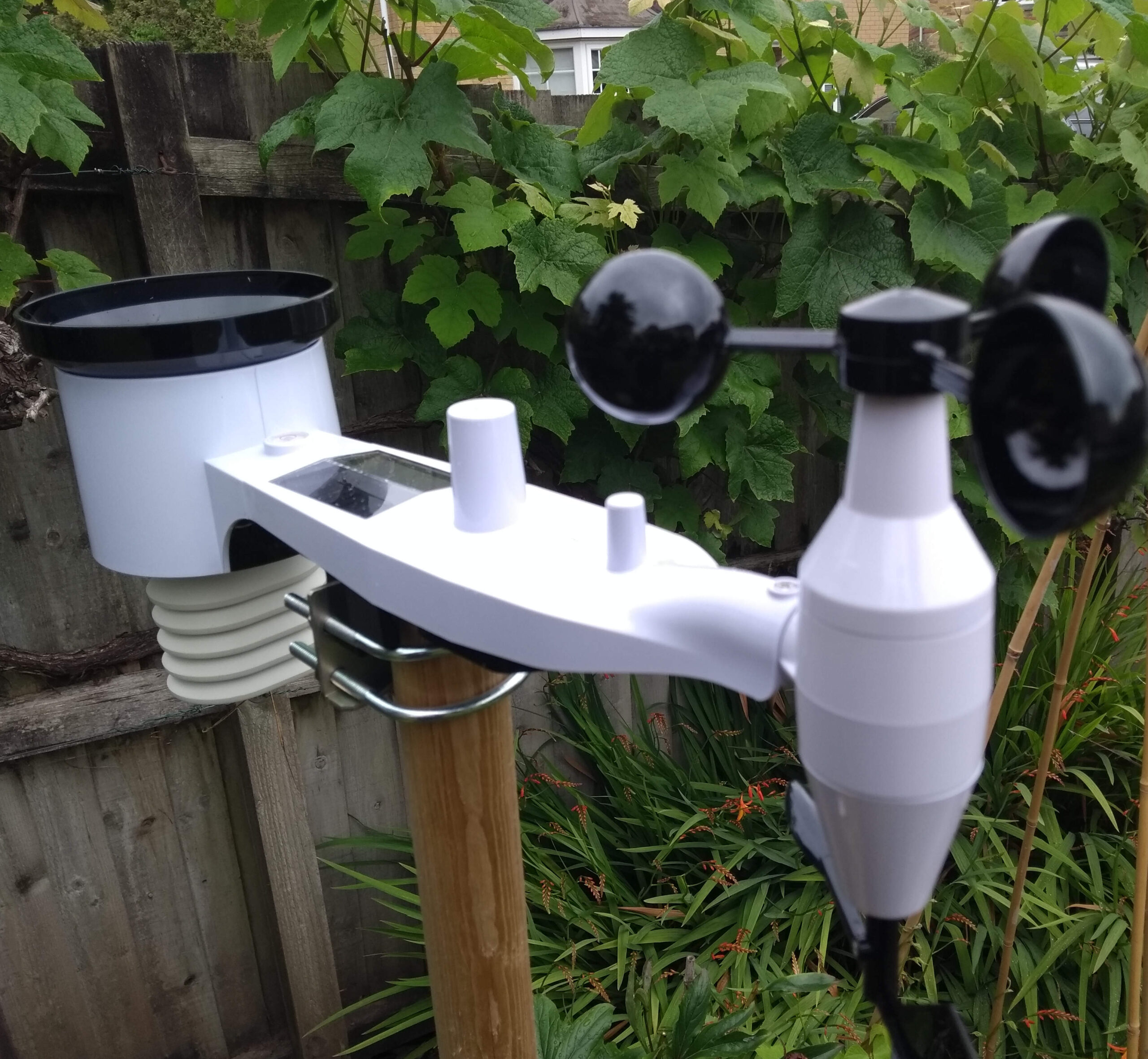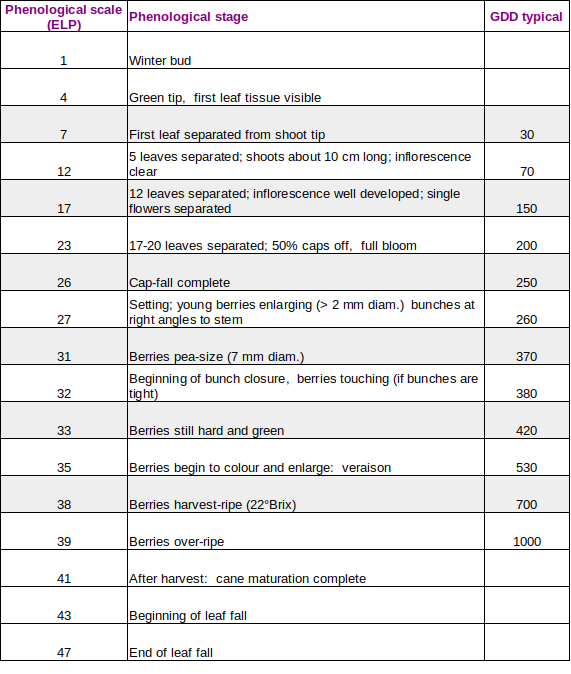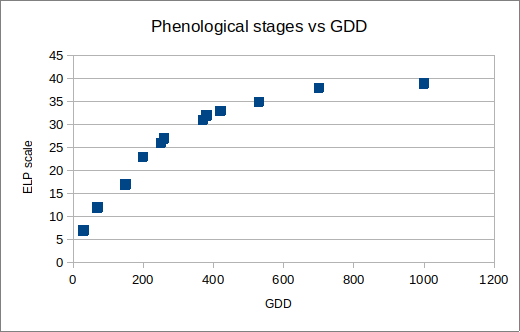Backyard-vineyard

This season we are trialling an Ecowitt SensorArray Weather Station in Backyard-Vineyard. It gives an array of microclimate observations: temperature, %RH, rainfall, solar irradiance, UV index, wind speed, wind direction and barometric pressure.
All these parameters can be used to extend the scope of Corbeau’s machine learning for vineyard temperature forecasting. Ecowitt provide a user dashboard which we configured to update every 10 minutes. In addition, this web page provides summary information for farmers to support cultivation decisions.
Growing Degree Days are useful to assess the likely dates for flowering, berry formation and ripening.
Cumulative At Risk Hours are useful for timing spraying against mildew spread.
Accurate temperature forecasting for the vineyard microclimate is essential so that spring frosts can be mitigated with as much warning as possible.
Latest microclimate report




Compare current GDD numbers with average cummulative GDD for the UK (shown in figure below).
Temperature forecasts

Met Office forecast
Corbeaucast
Forecasts vs observations

Met Office forecast
Ecowitt weather station observation
CorbeauCast
Mildew advice
Powdery mildew and downy mildew are both important pathogens of grapevines and farmers typically spray sulphur and copper fungicides at 14 day intervals during the growing season. Conditions of high temperature and humidity encourage the growth and spread of mildews. CorbeauCast provides a daytime mildew risk indication of HIGH, MEDIUM and LOW. These correspond to vineyard conditions:
T>14 degC and RH >82%
T >14 degC and RH < 82%
T < 14 degC
At times of HIGH mildew risk, it is important to check the At Risk Hours number frequently because it can accelerate rapidly.
The At Risk Hours (ARH) chart provides a year-long record of accumulated mildew risk which can be considered when deciding on fungicide application. There are a number of potential intervention points:
75 hours – to tackle over-wintering spores
200 hours – to tackle mildew development
325 hours – to stop new mildew development
450 hours – to stop further mildew development and then every 125 hours if the season permits
Growing Degree Days advice
Growing Degree Days (GDD) is a useful record of how much energy a vine can potentially use to grow, flower, fruit and ripen. The GDD chart shows a cumulative total of GDD throughout the season.
It can be used to follow progress against expected phenological stages, alert to unexpectedly slow development and with a long-range weather forecast, to anticipate future stages.
Use the chart below to see how the vineyard or varietal parcels are progressing against expectations.

